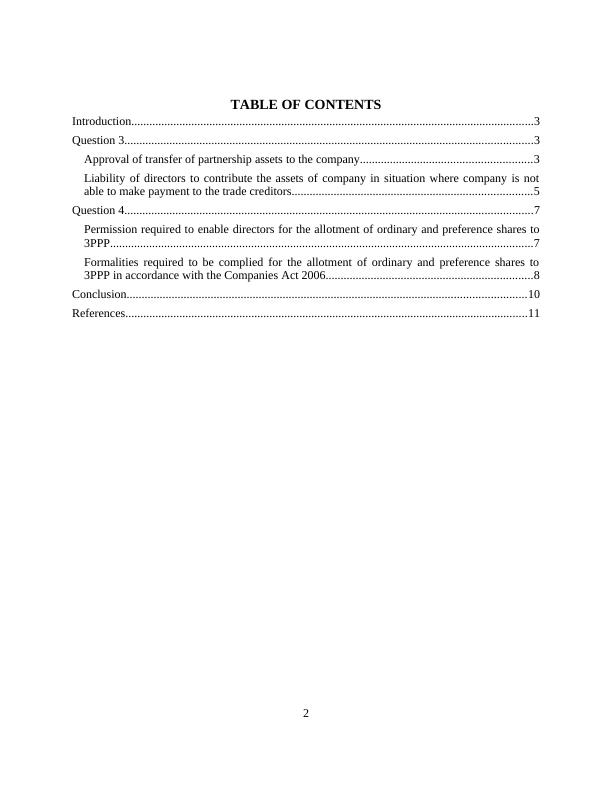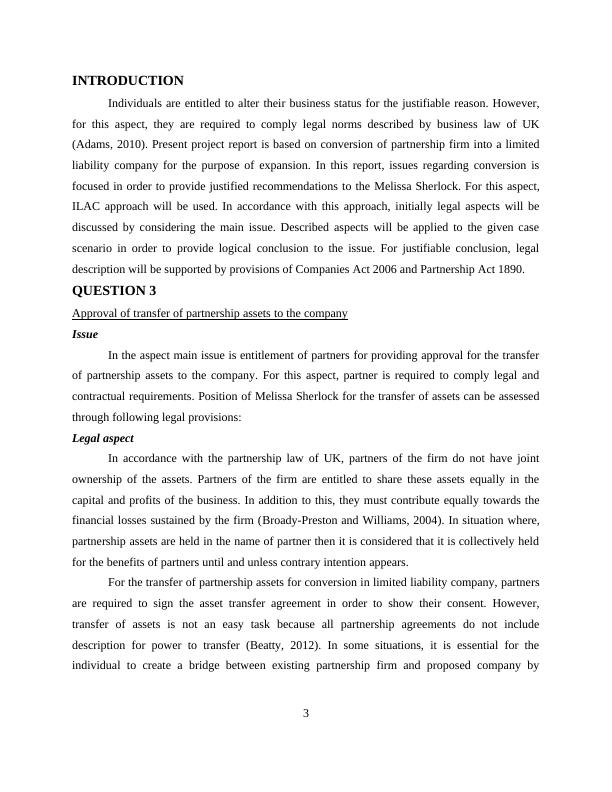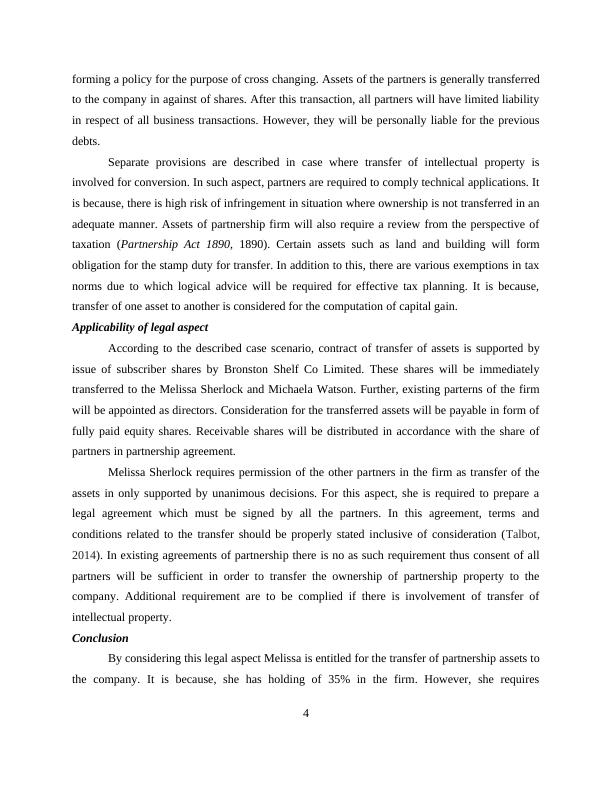Formalities for the allotting of ordinary and preference shares to 3PPP in accordance with the Companies
13 Pages3710 Words92 Views
Added on 2020-01-28
About This Document
Law INTRODUCTION 3 Question 3 3 Approval of transfer of partnership assets to the company 3 Liability of directors to contribute the assets of company in situation where company is not able to make payment to the trade creditors 5 Question 4 7 Permission required to enable directors for the allotment of ordinary and preference shares to 3PPP 7 Formalities required to be complied for the allotment of ordinary and preference shares to 3PPP in accordance with the Companies Act 2006 8 Conclusion 10 References 11 Introduction Individuals are entitled to alter their business
Formalities for the allotting of ordinary and preference shares to 3PPP in accordance with the Companies
Added on 2020-01-28
ShareRelated Documents
End of preview
Want to access all the pages? Upload your documents or become a member.
Report on Case Study of Sherlock and Watson Toys Partnership
|9
|2515
|322
Business Law Assignment : TFEU
|11
|3337
|22
Benefits and Disadvantages of Ordinary Partnership and Limited Liability Partnership
|8
|1861
|409
Commercial Law: Business Structure, Formalities, Bell Gorge, Gisela, Expansion Plan, Incorporation
|9
|2164
|280
Comparative assessment of partnership and company 3 Duties of employer in accordance with the Employer Act 20106
|10
|3175
|316
(PDF) Theory of Problem Solving
|8
|1911
|124




